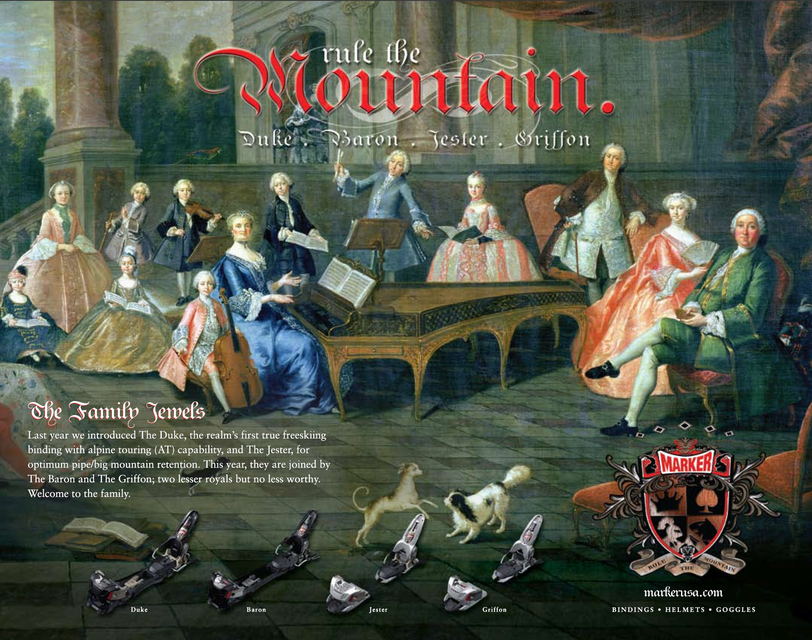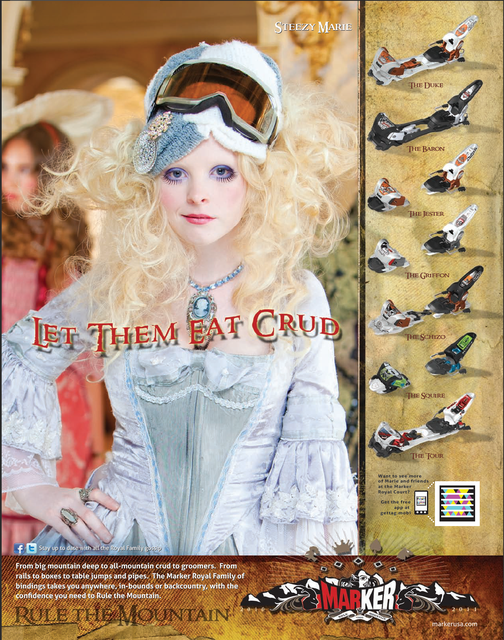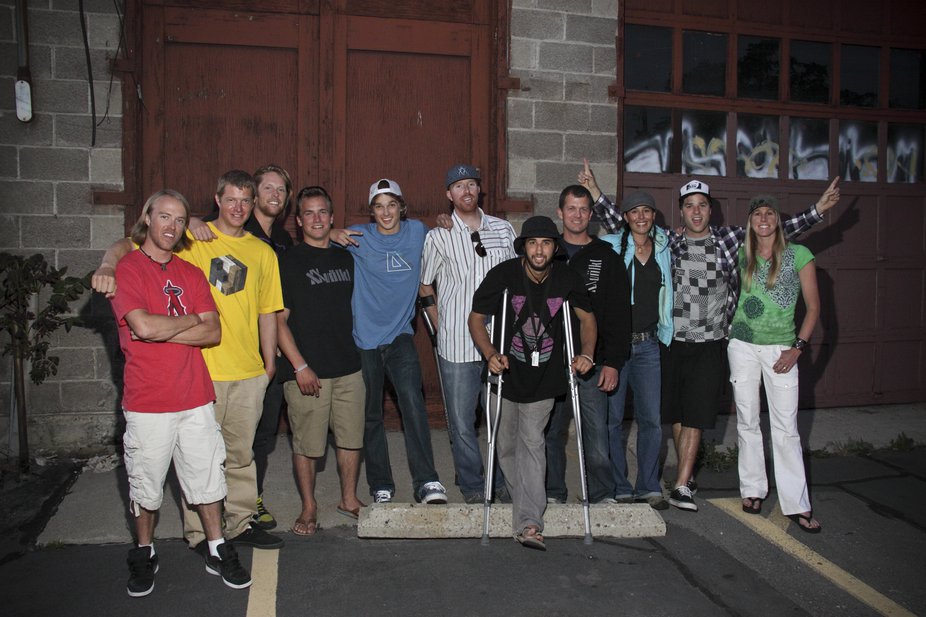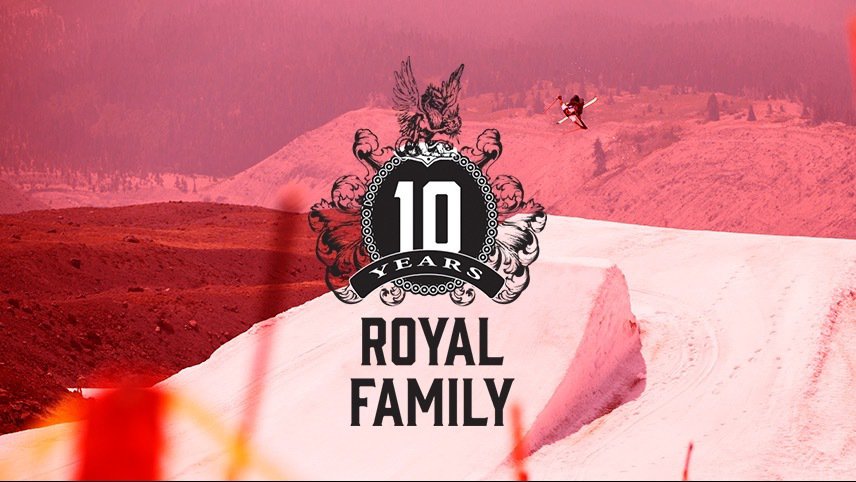Cover Image // P: Grant Whitty // S: Nick Goepper // L: Mount Hood, Ore.
Bindings are an often overlooked technology that nonetheless plays a crucial role in the everyday life of a skier. They are what keeps us connected to our skis and yet sets us free while tomahawking down the side of a mountain. The bindings we know today have come a long way since their conception, having begun life as a simple leather strap, tying the boot to the ski.
Leather straps eventually transitioned to an early design of cable-type telemark binding. But cable bindings had no release mechanism, yet were far stiffer than the leather straps so broken legs became a commonality. A skier named Hjalmar Hvam conceived the first releasable binding after being injured on Mount Hood in the late 30's. It was known as the Saf-Ski and it changed skiing forever, continuing to sell well into the 60's, when it was forced out of production by increased liability and insurance costs. It was probably past its time regardless. Since the 1950's brands had been re-inventing and improving the releasable bindings, eventually bringing them to mainstream status. Marker was among them and their Rotomat was a game changer, releasing at both the toe and heel. Bindings that allowed skiers to fall in a safer manner dramatically lowered the number of broken legs, greatly widened the appeal of the sport.
Alpine skiing was just on the cusp of becoming a major industry in the States at this time. Breckenridge was still a mining town and Aspen had only been turning lifts for 4 years. Skiing began to appeal to more people as safety increased and travel became more accessible. Aside from Teflon AFD pads, binding innovation was minimal. The designs and materials changed, but little was done to improve binding function itself. Skiing was either a leisure activity or a sport, racing. The bindings of the time reflected that.
As skiing began to evolve from leisure activity to extreme sport, ski brands took note. They built more and more skis catering to the freestyle revolution. Although skis got wider and more symmetrical, bindings remained the same. It wasn't until years later, in 2007, that Marker introduced the first bindings designed from the ground up for the new breed of skier. There was a new king in the castle; the Marker Royal Family was born.
It's hard to believe that 2007 was a decade ago. Over the last 10 years, some of the greatest tricks have been stomped on a pair of Marker bindings. Often times bindings get left out of the picture, however, it is undeniable that Marker has helped shape both freeskiing and binding design, over the last decade.

Some say these were the glory days of freeskiing. The niche was new, and being pushed further every day. Some of skiing's greatest legends were in their heyday. Marker realized that freestyle skiing wasn't just a phase. They worked closely with their team of skiers to develop the first-ever freeski-specific bindings, known as the Royal Family. In 2007, the family started out as just a couple, the Jester and Duke.
The Duke was like nothing on the market at the time. The randonnee-style bindings of the day did get skiers up the mountain, however their downhill performance was well below par. The Duke changed that bringing Alpine binding like performance to the downhill leg, allowing skiers to begin charging much harder in the backcountry under their own steam, thus furthering the sport and opening up to a whole new audience.
The Jester was a more traditional alpine binding, but geared towards park and big mountain skiing. As the sport's boundaries were being pushed, skiers began to get ejected after stomping new tricks. Marker put this at the forefront of their Royal Family line and recreated toe piece design in the process. Most bindings of the day were longer and more triangle shaped. Marker created a more compact, yet powerful front, resulting in a more centered swingweight.
Ingrid Backstrom - Best Female Performance - Claim - Powder Awards

After the success of the Duke and Jester in the season prior, Marker doubled the size of the royal family, adding two more bindings to the the family. In 2008 Marker introduced the Baron and Griffon bindings, a more price-point and lighter weight counterpart to the Duke and Jester. The Baron for touring and the Griffon for park and all mountain.
Grete Eliassen - Silver Medal - Slopestyle - X Games

An early Royal Family ad, Circa 2008. Courtesy of Marker Bindings.

Two seasons deep and the Marker Royal family had become household names in the freeskier realm. Some of the industry's best skiers now clicked into Markers to push the limits. One of those skiers was Ahmet Dadali, who was blowing up at the time, especially thanks to his legendary segment in Level 1 Productions Eye Trip.
"I can't believe I have been putting together street and backcountry segments for over 10 years now." Ahmet says. "It feels good to be with a binding I can trust for this long. I'm confident that the bindings will stay on when the need to and pop off when it's time to fly off."
Innovation continued in 2009 with a new product. The current quartet of bindings got a new paint job and Marker released an all-new multi-position binding, known as the Schizo. The Schizo was non-touring binding that was created to accompany the riding styles of skiers who hit bothe the park and the mountain. It had the ability to adjust from a center mount for park to further back for ripping the mountain with the turn of a key.
Ahmet Dadali - Breakthrough Performer & Best Jib - Eye Trip - Powder Awards
Ian McIntosh - Best Line - Light The Wick - Powder Awards
Grete Eliassen - Bronze Medal - Slopestyle - X Games
Tom Wallisch - Gold Medal - Slopestyle - Dew Tour (Snowbasin, UT)

Going into the 2010 - 2011 season, the marketing team at Marker conceived one of the most creative and memorable marketing campaigns ever seen in the ski industry: Steezy Marie. Marie was a goggle-wearing aristocrat and the new face of the Royal Family's campaign that season, and seasons following. Alongside Steezy Marie and her friends, Marker introduced three new bindings to the family this season: The Tour 10, Tour 12 and the Squire. The Tour bindings were directed to the skier that spends most of their time in the backcountry, opposed to the Duke and Baron which are more versatile in and out of the backcountry. The Tours were largely targeted towards uphill performance but maintained stability on the down. The Squire is an entry-level binding with a lower DIN than the original royal subjects and focuses on cutting weight.

One of Marker’s first ads feat. Steezy Marie, Circa 2011. Courtesy of Marker Bindings.
Ingrid Backstrom - Best Female Performance - Attack of La Nina - Powder Awards--
Russ Henshaw - Silver Medal - Slopestyle - X Games
Grete Eliassen - Bronze Medal - Slopestyle - X Games

One of the most memorable North American seasons in recent years, the 2011 La Nina season was notorious for dumping feet of snow all across the United States and Canada. By 2011 The Royal Family has grown to nine different bindings. This season Marker worked closely with their park-oriented skiers to create a pro version of their Jester binding. The Jester Pro incorporated all the great qualities of the Jester binding and added more strength to the body along with a ridiculous high DIN of 18. The Jester Pro allowed park skiers to stop the next biggest trick and not have to worry about ejecting on a clean landing.
Tom Wallisch - Skier of the Year - Freeskier Magazine
Tom Wallisch - Gold Medal - Slopestyle - X Games
Nick Goepper - Silver Medal - Slopestyle - X Games
Tom Wallisch - Gold Medal - Slopestyle - Dew Tour (Killington, VT)
Nick Goepper - Bronze Medal - Slopestyle - Dew Tour (Killington, VT)
Tom Wallisch - Silver Medal - Slopestyle - Dew Tour (Snowbasin, UT)
Nick Goepper - Gold Medal - Slopestyle - Dew Tour (Snowbasin, UT)
Tom Wallisch - Gold Medal - Slopestyle - Dew Tour (Breckenridge, CO)
Nick Goepper - Silver Medal - Slopestyle - Dew Tour (Breckenridge, CO)

After a monster snow year in the U.S. with nearly-endless powder days, Marker widened the mounting platform of the whole Royal Family so that they would drive the new breed of wider skis better. Away from the steep and deep, the competition front began heating up for one of Marker’s very own, Nick Goepper. After many seasons of competing in Dew Tour and X Games, Goepper snagged a Gold Medal at X Games, in Aspen.
“My favorite memory was definitely winning my first X Games on a pair of Jester Pros.” Goepper says. “I don’t think another binding could have held up to all those massive switch dub misty twelves I did on the last jump during the event.”
Nick went on to have an incredible follow up season, winning slopestyle events across the globe.
Dylan Hood - Best Powder - Way of Life - Powder Awards
Nick Goepper - Gold Medal - Slopestyle - X Games
Tiril Sjåstad Christiansen - Gold Medal - Slopestyle - X Games
Russ Henshaw - Gold Medal - Slopestyle - Dew Tour

Marker introduces the Lord binding, a multinorm touring and alpine binding with interchangeable toe pieces. The Lord was a hybrid between the Jester and the Duke. There was further development on the Duke binding by adding an Extended Power Frame, giving wider skis the opportunity to be toured on. By now, Marker has a stacked team of park athletes, who all pitched-in to enhance the newly successful Jester Pros.
Dylan Hood - Best Powder - Almost Ablaze - Powder Awards
Nick Goepper - Bronze Medal - Slopestyle - Winter Olympics
Nick Goepper - Gold Medal - Slopestyle - X Games
Nick Goepper - Gold Medal - Slopestyle - Dew Tour
Alex Beaulieu-Marchand - Silver Medal - Slopestyle - Dew Tour

The Marker Team, Circa 2011. Courtesy of Marker Bindings.

As the backcountry scene began to grow, Marker did too, with the release of their first tech touring binding, the Kingpin. Its solid construction and light weight has made it a revered tech binding for backcountry skiers today.
Nick Goepper - Gold Medal - Slopestyle - X Games
Emma Dahlström - Gold Medal - Slopestyle - X Games
Øystein Bråten - Silver Medal - Slopestyle - Dew Tour
Nick Goepper - Bronze Medal - Slopestyle - Dew Tour
Emma Dahlström - Silver Medal - Slopestyle - Dew Tour

The Royal Family is simplified for the 2015-2016 season. Marker continues to make enhancements and adjustments to their world-class binding family.
Sammy Carlson - Skier of the Year - Freeskier Magazine
Ian McIntosh - Best Line - Tight Loose - Powder Awards
Sammy Carlson - Best Male Performance, Best Air, Best Powder - The Sammy C Project - Powder Awards
Tiril Sjåstad Christiansen - Silver Medal - Slopestyle - X Games
Øystein Bråten - Bronze Medal - Slopestyle - X Games

New for this season, Marker adds Sole ID technology to all of their bindings. Sole ID technology is located in the toe piece of the bindings, and allows for adjustment of various boot soles. This allows skiers to use both alpine and touring boots in the alpine bindings.
Øystein Bråten - Gold Medal - Slopestyle - X Games
Øystein Bråten - Silver Medal - Pro Competition - Dew Tour
Alex Beaulieu-Marchand - Bronze Medal - Pro Competition - Dew Tour
Team Volkl - Silver Medal - Team Challenge - Dew Tour

Øystein Bråten (left), Henrik Harlaut (center), and Alex Beaulieu-Marchand (right) on the podium at Dew Tour 2016, Breckenridge, Colo. Photo by Grant Whitty.

As this season kicks off, Marker celebrates 10 years of the Royal Family and looks back on all of the great innovations and accomplishments that have been completed while clicked into a pair of Marker bindings. It is no doubt that Marker has changed freeskiing forever.
Firstly with the revolutionary Duke and Jester bindings and then continually with their upgrades and additions to the family. By working side-by-side with their professional ski athletes, Marker has been pushing the limits of what is possible with ski bindings. Every season Marker has been pushing the envelope with some piece of new technology, upgrade or completely new binding. I’m sure Marker has some new plans in the books for next season, but we won’t know what they've created until SIA later this season. Here's to another 10 years.
-Sponsored Content-


Comments